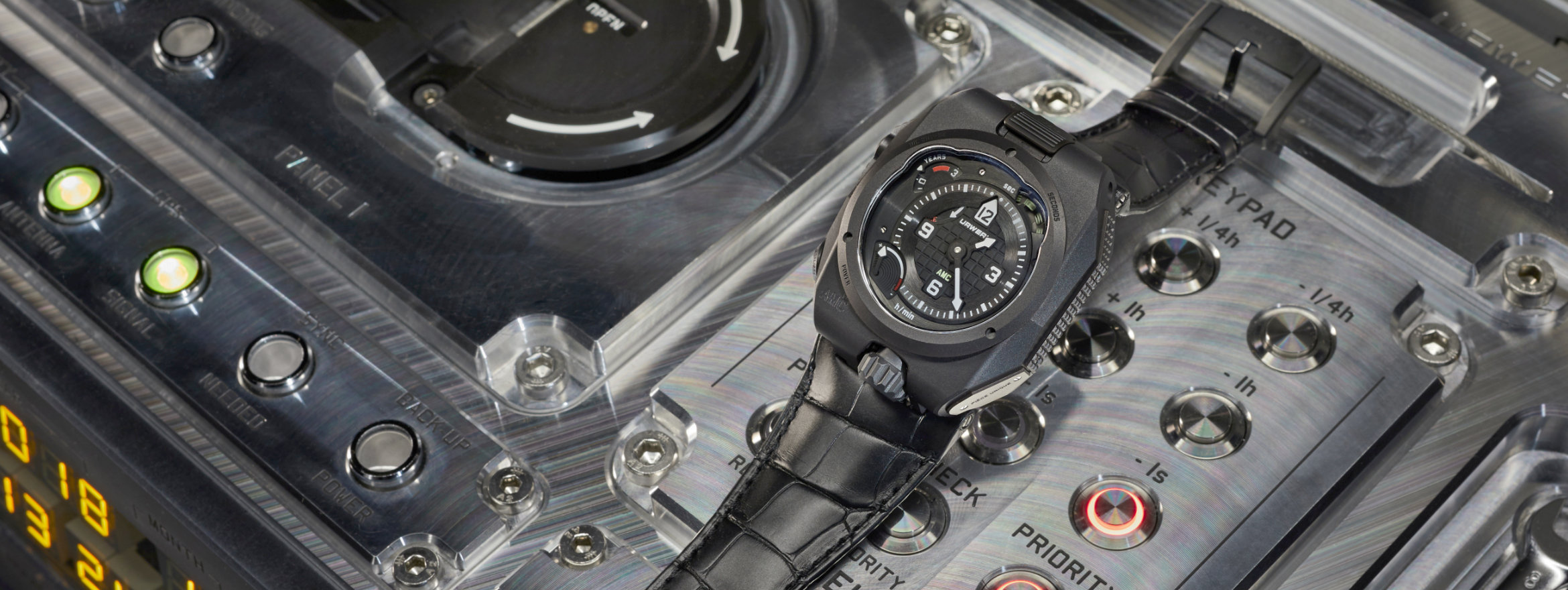New Watch! • 20 Apr 2019
Atomic Clocks in the Living Room – Urwerk’s AMC
Last year, experimental Swiss watchmaker Urwerk stunned SIHH guests and onlookers with its cutting-edge release, the Atomic Master Clock, or AMC. Capturing the precision of an atomic clock, packaging it for the general user and pairing it with a wristwatch, it was a genuine landmark moment in watchmaking. In the world of horology, the atomic clock is almost certainly the king of timekeeping devices. Thanks to its impeccable precision, the atomic clock has become the most supreme timekeeper of all.


It was a few years later at the NBS that the first physical iteration of the atomic clock appeared in 1949. NBS researcher Harold Lyons created the prototype, which was based on the frequency of the vibrations emitted by the ammonia molecule. To put this in context, a pendulum clock uses its pendulum and gears to keep track of time. It does this by using the pendulum as a resonator and employing the gears to count the resonations (back-and-forth swings) of the pendulum. A quartz watch uses quartz crystal as the resonator and has a digital counter that counts the vibrations of the quartz crystal. By contrast, an atomic clock uses the oscillations of atoms as its resonator.

The technology continued to evolve over the following years, with more and better clocks being released. Three years after the prototype, the NBS released a new model – the NBS-1 – that used cesium atoms as the vibration source. These atoms soon became standard among atomic clocks, and in 1967, the 13th General Conference on Weights and Measures announced that the Standard International second was defined by the cesium atom’s vibrations (to be exact, it’s the time it takes a Cesium-133 atom at the ground state to vibrate 9,192,631,770 times). This marked a serious turning point for universal timekeeping; no longer did the world rely on the division of astronomical events – like the solar day – to receive an accurate time.

Atomic clocks are now the most definitive timekeepers. There are hundreds aboard various GPS satellites that contribute highly accurate time data to ensure GPS signals work efficiently. There are also currently around 400 atomic clocks in 69 laboratory locations around the world whose outputs are combined by the International Bureau of Weights and Measures to determine International Atomic Time.

One of the most important of these clocks is overseen by the National Institute of Standards and Technology in Boulder, Colorado, where the atomic clock originated. The National Institute’s NIST-F2 is possibly the most accurate atomic clock to date. It is claimed that it will neither lose nor gain a second in an incredible 300 million years.

However, the atomic clock has never really reached the same level of commodotisation as its contemporaries; unlike quartz or pendulum movements, it would be unusual to see an atomic clock sitting on the average desk or mantlepiece. In developing the idea for the AMC, Urwerk aimed to flip the idea of owning an atomic clock on its head. Now, the first AMC has been delivered to a recipient in the US, making the advanced horological technology a commercial reality.

The AMC is a pretty stellar feat of mechanics that took nearly ten years to create. Once connected, the clock conforms to the time set by the existing atomic clock system. Thereafter, it runs independently. And, true to its name, the clock plays ‘master’ to a Urwerk wristwatch. It acts as a dock for the watch to sit in between wears, where it can then set the watch to the correct time and adjust its rate if necessary. The wearer’s watch would then be perfectly accurate and in line with International Atomic Time – a cool idea for customers fascinated by that kind of precision.

If the concept sounds familiar, it is; the master/slave relationship between the clock and the watch replicates that of the iconic Breguet Sympathique. At the time, the technology behind the Sympathique was nothing short of exceptional; on the Breguet model, a pocket watch had three tiny holes that, when docked in a gold cradle on top of the master clock, allowed the clock to regulate the watch.

The name Sympathique, no doubt, comes from the symbiotic relationship between clock and watch. The Breguet Sympathique is still widely revered for its ingenuity, not least by the creators at Urwerk who have offered their own modern interpretation with the AMC. The AMC is futuristic, slick, and extraordinary, but it encapsulates historical technology, both with the atomic clock and Sympathique system – there’s no denying that it’s drawn on a rich past of technological advancements. In that vein, then, the AMC is not just a partnership between clock and watch, but a marriage of history and revolutionary mechanics.
For more on other Urwerk watches, feel free to stop by and have a chat. We carry Urwerk across several of our boutiques.













